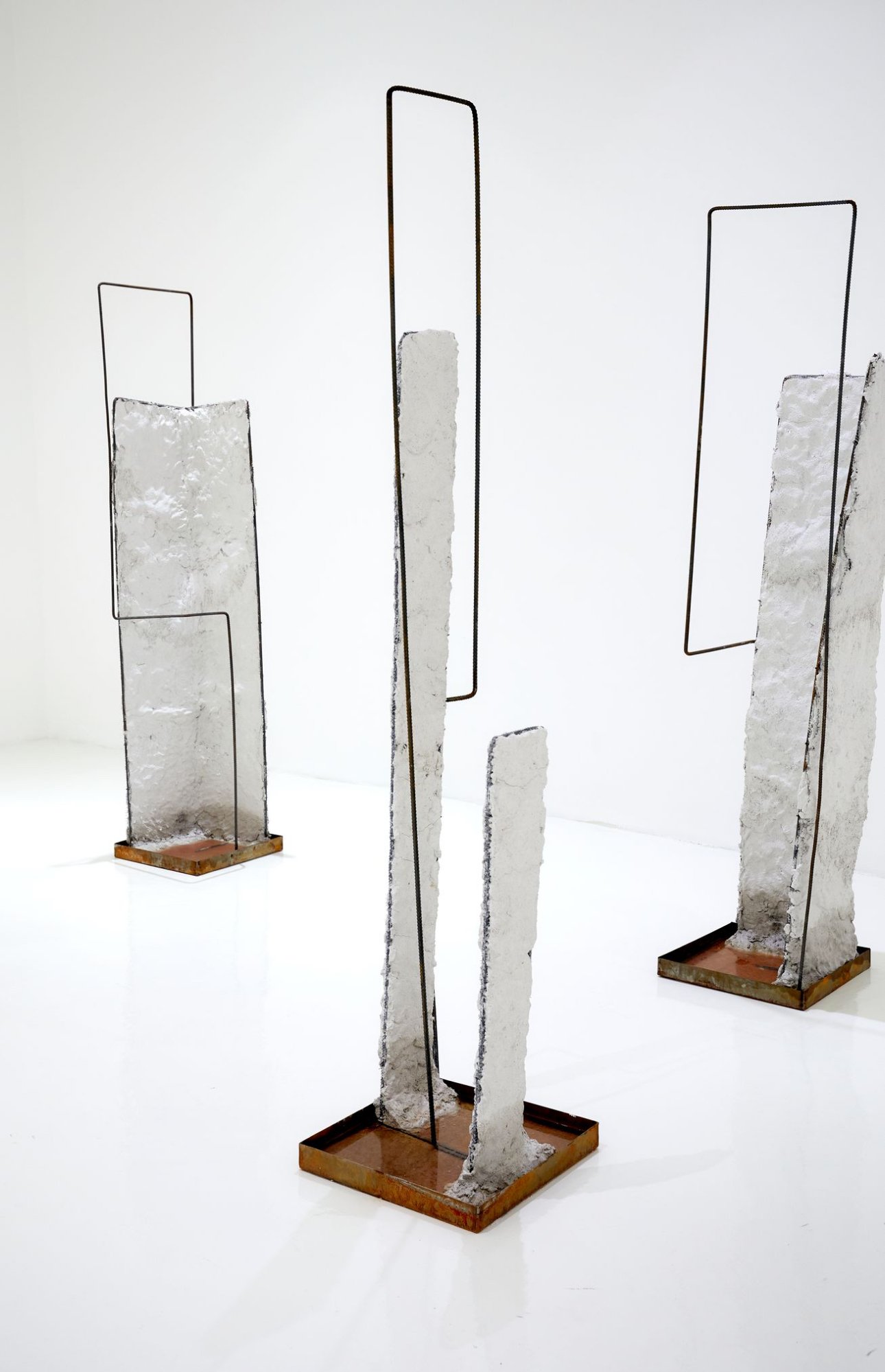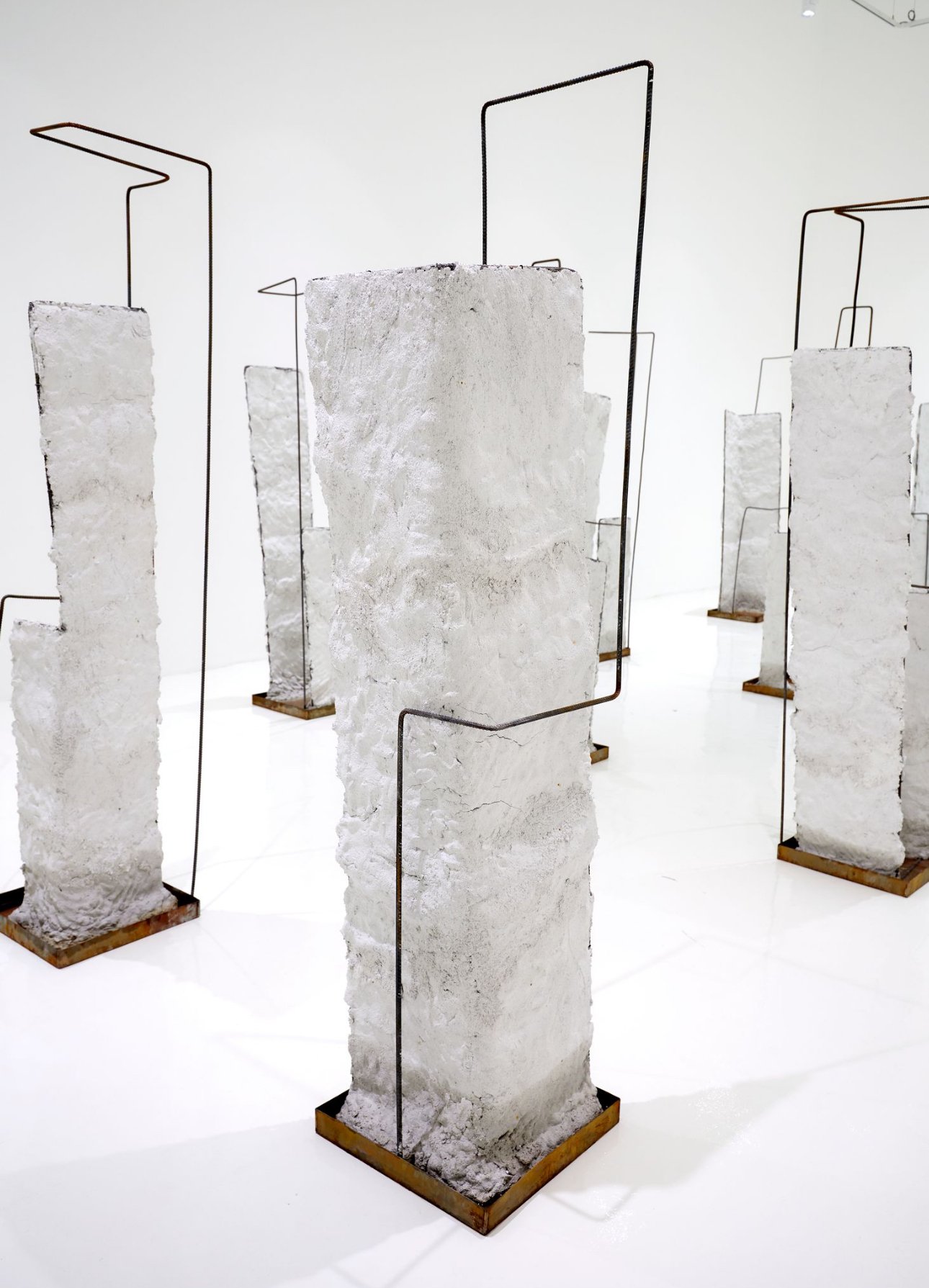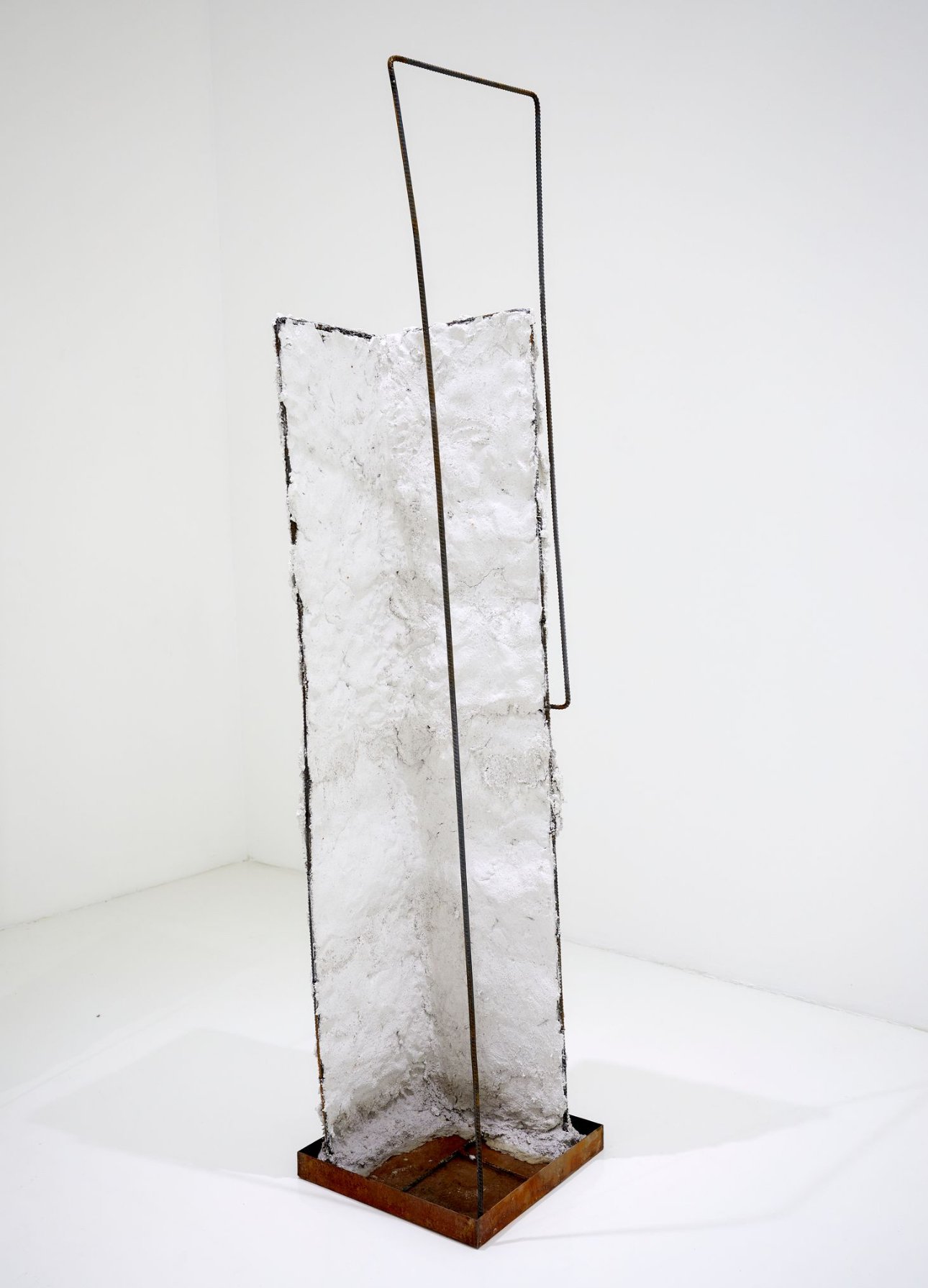This project extends the logic of Theory of Transition through the fragmentation of the body into modular units and the use of material transformation as temporal inscription. I began with a 1.80 x 1.80 x 1.80 m steel structure—an embodied memory volume—which I disassembled into fifteen sculptures, each derived from my widest bodily dimension: 40 cm. These forms operate as spatial iterations of the self, refracted through posture, scale, and repetition.
Each sculpture is cast in constantly moistened concrete, designed to remain in transition: changing color, releasing salt, and marking time through corrosion. I was thinking about Cronenberg’s Dead Ringers—specifically the surgical tools designed by the twins, objects that are precise yet estranged. I wanted the forms to feel like that: close to the body, but never entirely familiar.
The project returns to the full-body drawing gesture I first developed in 2016, informed by Juhani Pallasmaa’s The Thinking Hand—the idea that drawing with the body is a form of embodied remembering. These fifteen fragments operate as architectural components of a body in reconstruction—no longer narrative, but systemic.
After completing the work, I realized what I retained most vividly from my earlier documentation of ruins was not form, but weather: the temperature, the weight of air, the season. From this point forward, climate and date would become the central coordinates of my memory-based architectural system.
Fifth of September of Two Thousand Sixteen (2019)
Sculpture, steel, rod, white concrete, marmoline, water.
Galería Hilario Galguera, Mexico City











